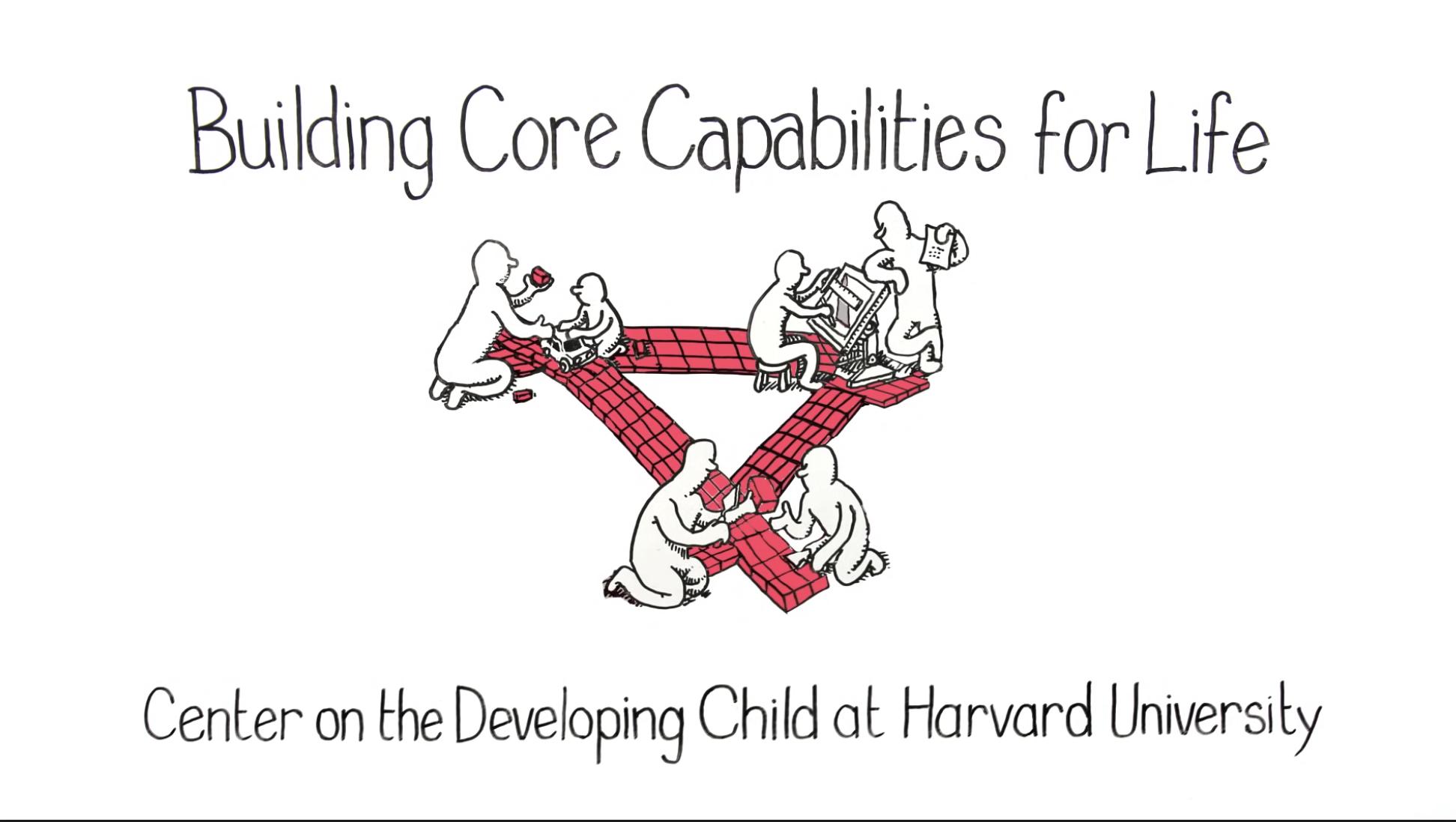Resources


Building Adult Capabilities to Improve Child Outcomes: A Theory of Change
Learn More
Here you will find information about why supporting responsive relationships in practice is important in helping children facing significant adversity. While a stable and committed relationship with a caring adult is critical, the weight of responsibility for supporting children should not rest solely on their caregivers. Society must address widespread and upstream factors, including systemic racism and environmental toxicants, that place substantial burdens and stress on caregivers.
In addition to coaching around serve and return interactions, discussing the principles of positive parenting can help promote the development of responsive relationships.
This 5-minute video depicts a theory of change from the Frontiers of Innovation community for achieving breakthrough outcomes for vulnerable children and families. It describes the need to focus on building the capabilities of caregivers and strengthening the communities that together form the environment of relationships essential to children’s lifelong learning, health, and behavior.
The science of child development and the core capabilities of resilient adults point to a set of “design principles” that policymakers and practitioners in many different sectors can use to improve outcomes for children and families. To be maximally effective, policies and services should:
Three Principles to Improve Outcomes for Children and Families
These principles, grounded in science, can guide policymakers and program developers as they design and adapt policies and programs to improve outcomes for children and families.

The following excerpts are from the guide “Science to Policy and Practice: 3 Principles to Improve Outcomes for Children and Families.” The principles point to a set of key questions for pediatrics: What are current policies, systems, or practices doing to address each principle? What could be done to address them better? What barriers prevent addressing them more effectively?
The information highlighted here focuses on the implications of the 3 principles in practice, but their implications in policy are equally important. The full paper details the science and recommendations behind the principles in more detail for a deeper dive.
The Science Behind the Principles
Scientists have discovered that the experiences children have early in life—and the environments in which they have them—not only shape their brain architecture, but also affect whether, how, and when the developmental instructions carried in their genes are expressed across multiple biological systems. This is how the interpersonal relationships young children experience with adult caregivers (within and outside the family) get “inside the body” and influence lifelong learning, behavior, and physical and mental health—for better or for worse. Throughout life, our ability to thrive is affected by our relationships, experiences, and interactions with our physical and built environments (including, for example, access to nutritious food and exposure to toxic chemicals). The degree to which these environments are health-promoting, supportive, and responsive—or not—directly affects prenatal development, child well-being, and family life. And all of these environments are shaped by the policies, supports, and structural inequities that create the conditions in which families live.
The biology of stress activation explains why significant hardship, threat, or trauma (e.g., from abuse, neglect, extreme poverty, systemic racism, or interpersonal discrimination) can lead to physiological and behavioral disruptions that can have lasting impact. However, not all stress is bad—children need to experience manageable amounts of adversity with help from supportive adults to develop coping skills and healthy stress response systems. But frequent or prolonged experiences that cause excessive stress activation can be toxic to the architecture of children’s developing brains and other biological systems. These experiences can also overload adults’ capacity to engage productively in work, families, and communities. Children whose environment of relationships includes supportive caregivers, extended families, or friends who are not overly burdened by excessive stress themselves can be protected from potential harm and develop the building blocks of resilience that lead to healthier and more productive lives.
Experiencing significant adversity early in life can set up our body’s systems to be more susceptible to stress throughout life, with long-term negative consequences for physical and emotional health, educational achievement, economic productivity, social relationships, and overall well-being. For adults who have experienced a pile-up of adversity since childhood, the additional weight of current adversity, such as from poverty, racism, or unsafe communities, may overload their ability to provide the stable, responsive relationships their children need and consistently meet the demands of the modern workplace. Therefore, these scientific findings are relevant to policy choices in a wide variety of areas—from traditional child-focused domains such as pediatrics, early care and education, parental leave, and nutrition to adult-focused domains such as employment, foster parenting, health care, income support, and housing. Even policies related to commercial zoning, banking practices, minimum wage, environmental regulations, public spaces, and criminal justice reforms all affect the conditions and environments experienced by families across generations.
For children, responsive relationships with adults have a double benefit: promoting healthy brain development and providing the buffering protection needed to prevent very challenging experiences from producing a toxic stress response. For adults, healthy relationships also boost well-being by providing practical advice and emotional support, which strengthen the hope and confidence needed to weather stressful situations. When public policy and effective services for families support responsive, serve-and-return interactions between adults and children—and strong relationships between service providers and their adult clients—they have the power to promote children’s healthy development and reinforce core adult skills, ultimately helping children become healthy, responsive parents themselves.
Why?
Responsive relationships early in life are the most important factor in building sturdy brain architecture. Think of building a house: The foundation establishes a base upon which everything else is built. The same is true with developing brains. Brain architecture is comprised of trillions of connections among billions of neurons across different areas of the brain. These connections enable lightning-fast communication among neurons that specialize in different kinds of brain functions.
A major active ingredient in this developmental process is the interaction between children and their parents and with other caregivers in the family or community. When an infant or young child babbles, gestures, or cries, and an adult responds appropriately with eye contact, words, or a hug, neural connections are built and strengthened in the child’s brain. Given the foundational importance of the first few years of life, the need for responsive relationships in a variety of settings, starting in infancy, cannot be overstated.
The most common protective factor for children and teens who develop the capacity to overcome serious hardship is having at least one stable and committed relationship with a supportive parent, caregiver, or other adult.
Supportive relationships also help build a foundation for resilience across childhood and into adulthood. The most common protective factor for children and teens who develop the capacity to overcome serious hardship is having at least one stable and committed relationship with a supportive parent, caregiver, or other adult. These personalized, responsive relationships buffer children from developmental disruption and model the capabilities that enable individuals to thrive in school, work, and maintain a stable household.
Responsive relationships help children and adults deal with stress, regulate emotions and behaviors, and build hope for the future. In contrast, the social isolation experienced by many families that are dealing with mental health problems or substance abuse—and the stigma associated with them—also damages relationships and increases isolation. Public policies and human service programs that are specifically designed to support the skills and environments that foster responsive relationships between children and those who care for them support healthy development and improve child outcomes. Likewise, service providers who listen responsively and treat clients with respect are more likely to be effective in promoting positive change.
Here are some examples of ways to apply the support responsive relationships design principle to practice:


